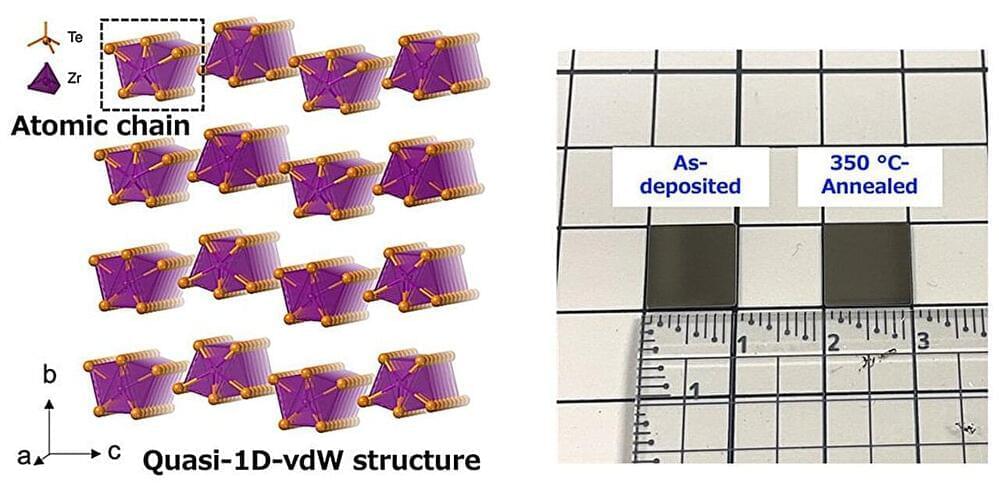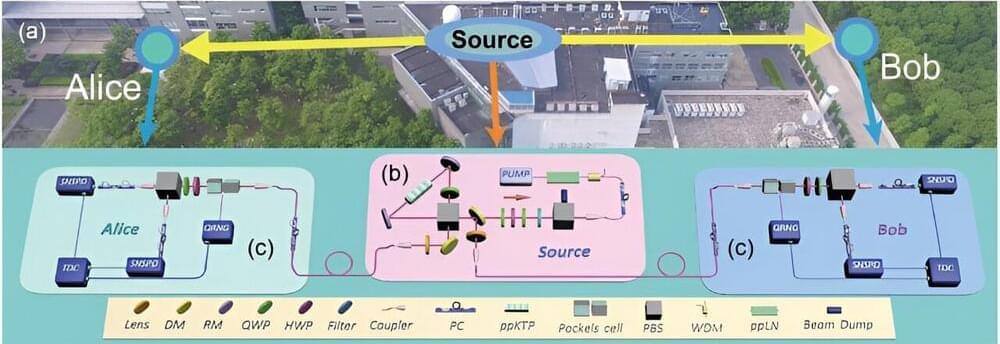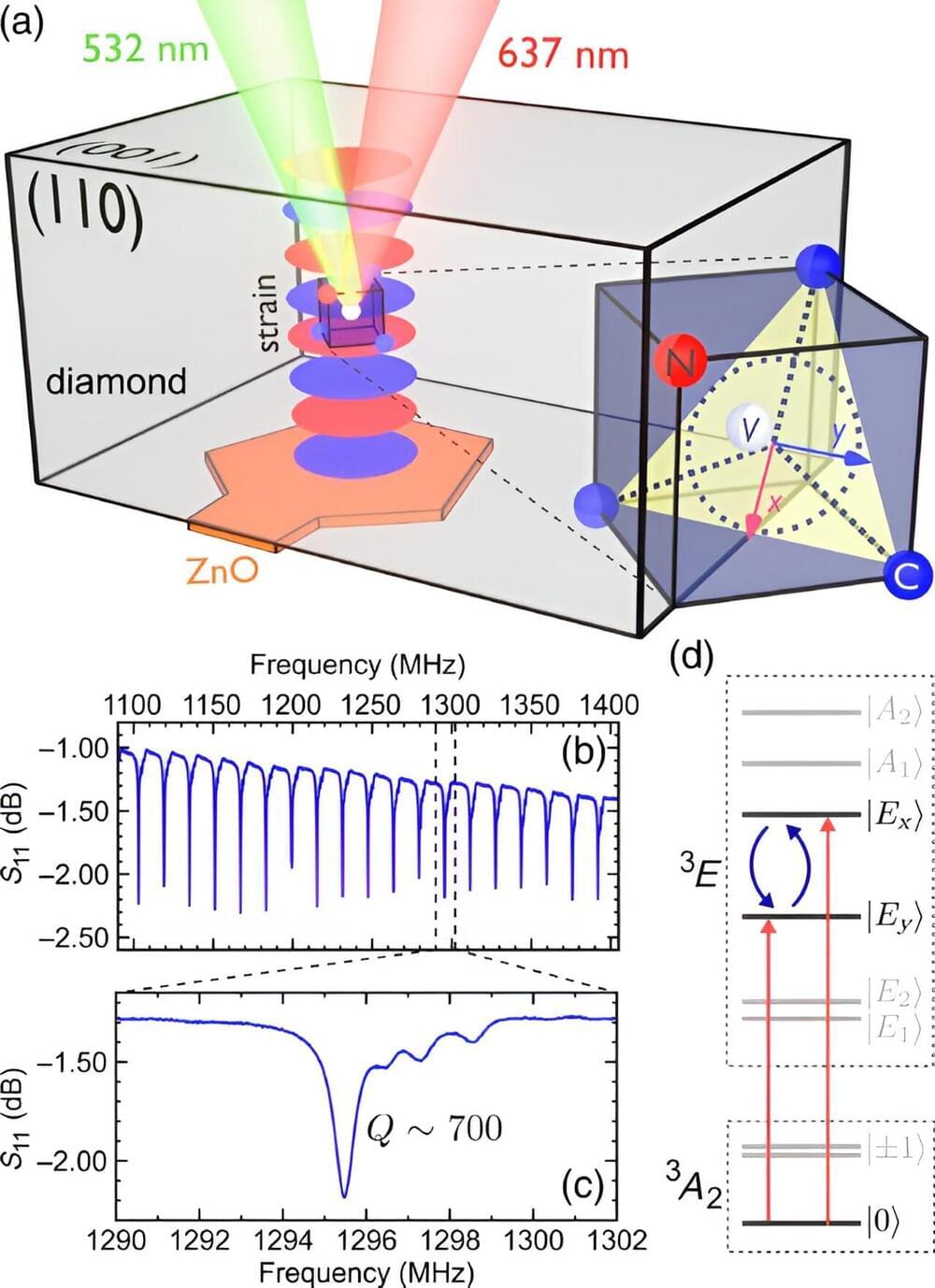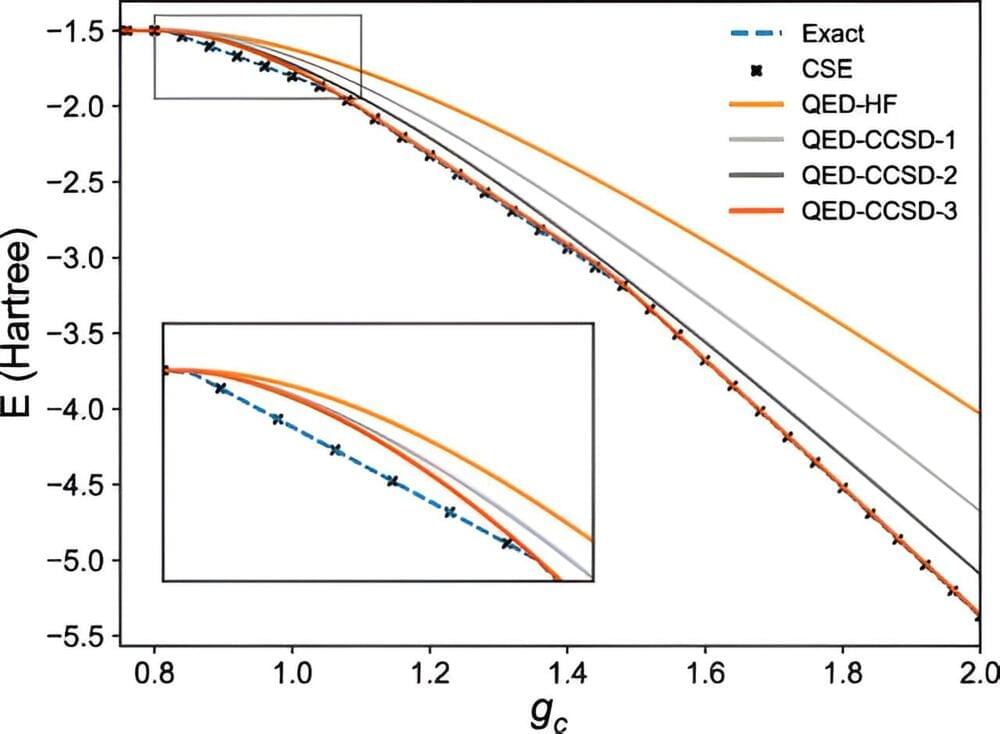Researchers have fabricated a quasi-one-dimensional van der Waals zirconium telluride thin film, which is a form of a substance that has long promised advances in quantum computing, nano-electronics and other advanced technologies. Until now, it has stumped scientists who have tried to manufacture it in large-scale quantities.
Category: quantum physics – Page 83
A team led by Stevens professor Igor Pikovski has just outlined how to detect single gravitons, thought to be the quantum building blocks of gravity—and making that experiment real should be possible with quantum technology, they suggest, in the near future.
A research team has achieved the loophole-free test of Hardy’s paradox for the first time. The team successfully demonstrated Hardy’s nonlocality while closing both the detection efficiency loophole and the locality loophole.
Summary: Researchers developed a brain-inspired AI technique using neural networks to model the challenging quantum states of molecules, crucial for technologies like solar panels and photocatalyst.
This new approach significantly improves accuracy, enabling better prediction of molecular behaviors during energy transitions. By enhancing our understanding of molecular excited states, this research could revolutionize material prototyping and chemical synthesis.
Cornell University researchers have demonstrated that acoustic sound waves can be used to control the motion of an electron as it orbits a lattice defect in a diamond, a technique that can potentially improve the sensitivity of quantum sensors and be used in other quantum devices.
A study coordinated by the University of Trento with the University of Chicago proposes a generalized approach to the interactions between electrons and light. In the future, it may contribute to the development of quantum technologies as well as to the discovery of new states of matter. The study is published in Physical Review Letters.
Nothing in science can be achieved or understood without measurement. Today, thanks to advances in quantum sensing, scientists can measure things that were once impossible to even imagine: vibrations of atoms, properties of individual photons, fluctuations associated with gravitational waves.
Scientists build a new light source for quantum communications by combining existing technologies together to create a stronger and more robust quantum signal.
Kagome metals exhibit superconductivity through a unique wave-like distribution of electron pairs, a discovery that overturns previous assumptions and may lead to the development of novel superconducting components.
This groundbreaking research, driven by theoretical insights and enhanced by cutting-edge experimental techniques, marks a significant step towards realizing efficient quantum devices.
For about fifteen years, Kagome materials with their star-shaped structure reminiscent of a Japanese basketry pattern have captivated global research. Only staring from 2018 scientists have been able to synthesize metallic compounds featuring this structure in the lab. Thanks to their unique crystal geometry, Kagome metals combine distinctive electronic, magnetic, and superconducting properties, making them promising for future quantum technologies.
Carl Kocher demystifies quantum entanglement through experimental evidence, challenging classical physics and enriching our understanding of quantum paradoxes.
Quantum entanglement may be hard to get your head around, but it’s believed to be the key to future technological applications in quantum information. In this guest editorial, inspired by his new article in Frontiers in Quantum Science and Technology, Prof Carl Kocher explains his groundbreaking 1964–67 experiments in quantum entanglement and helps us stretch our minds to understand this apparently paradoxical phenomenon.
My new article, ‘Quantum Entanglement of Optical Photons: The First Experiment, 1964−67’, is intended to convey the spirit of a small research project that reaches into uncharted territory. The article breaks with tradition, as it offers a first-person account of the strategy and challenges for the experiment, as well as an interpretation of the final result and its significance. In this guest editorial, I will introduce the subject and also attempt to illuminate the question ‘What is a paradox?’









